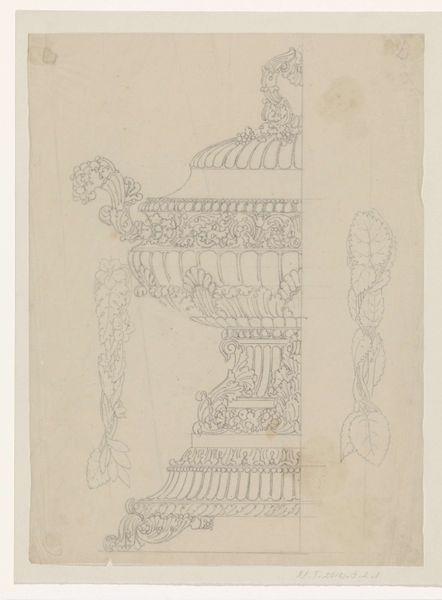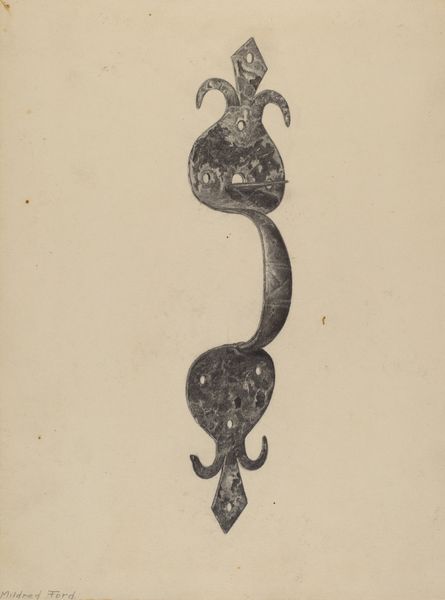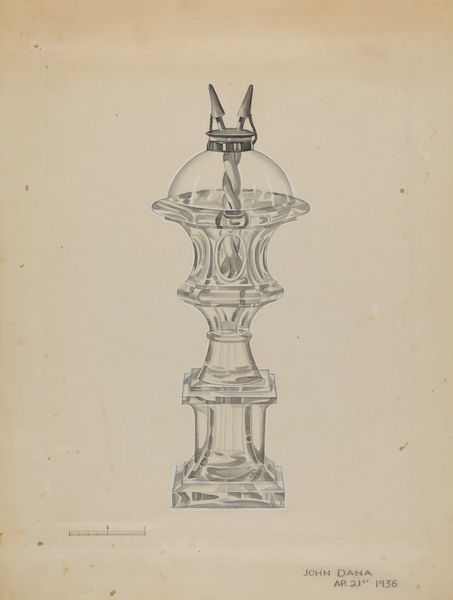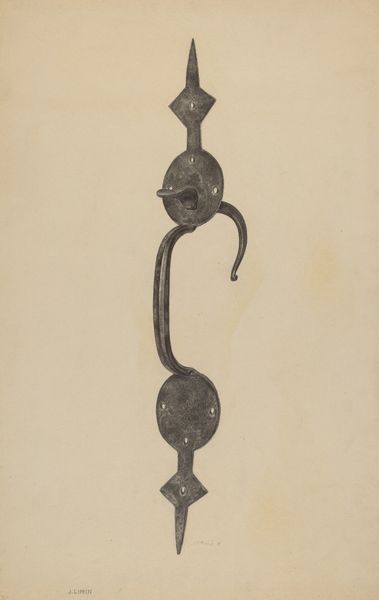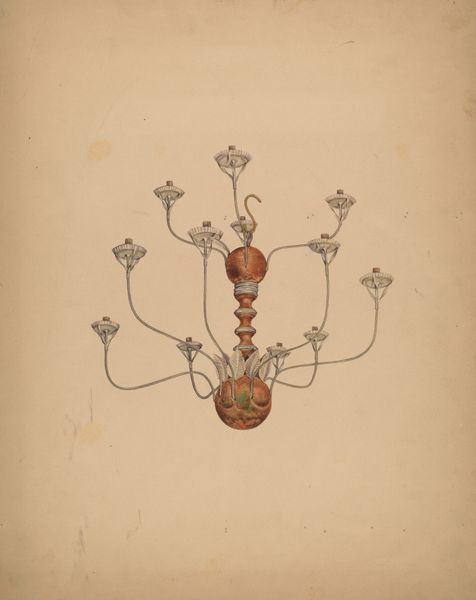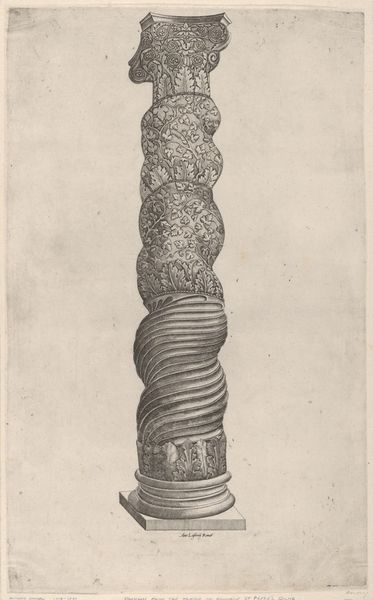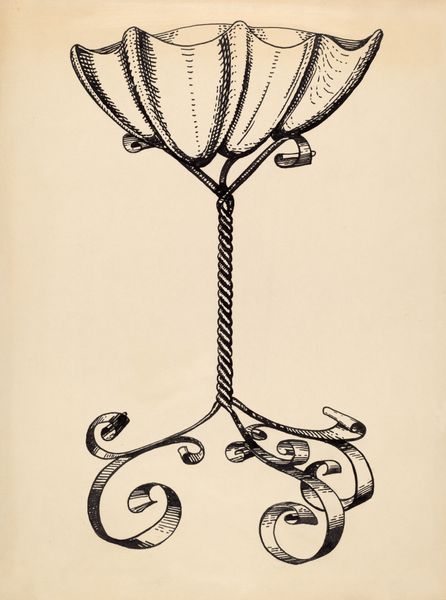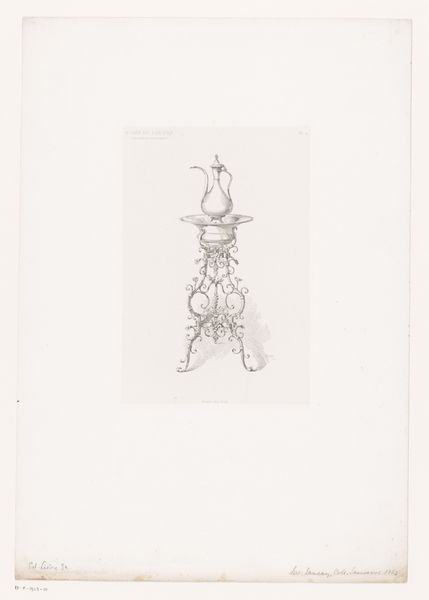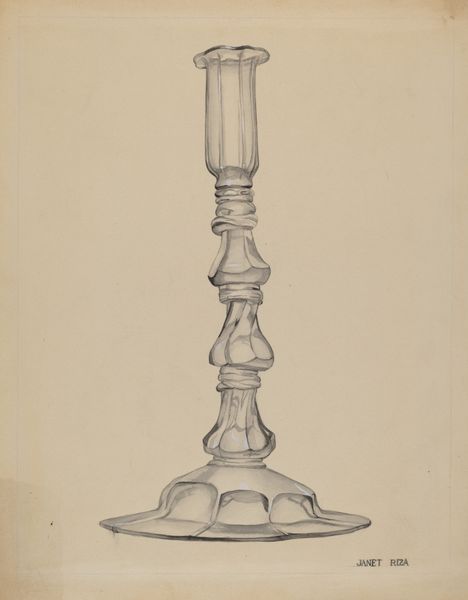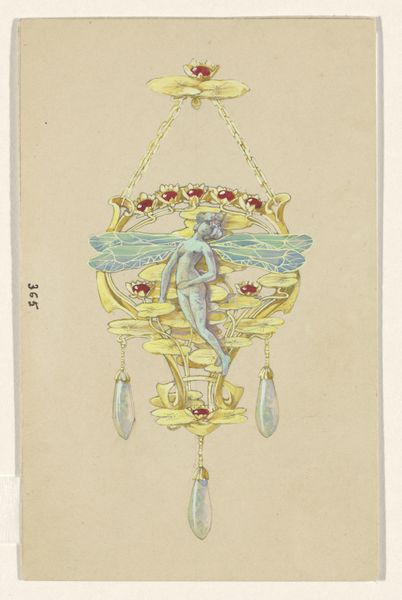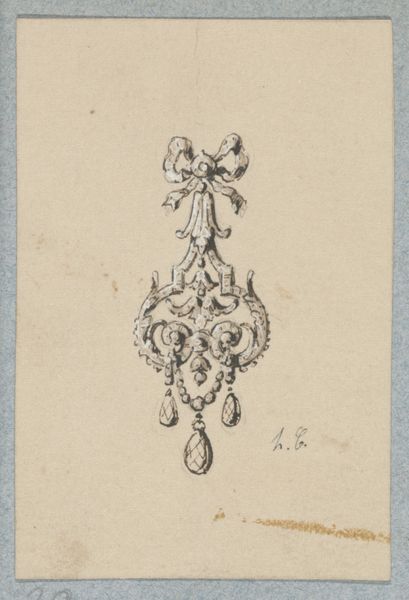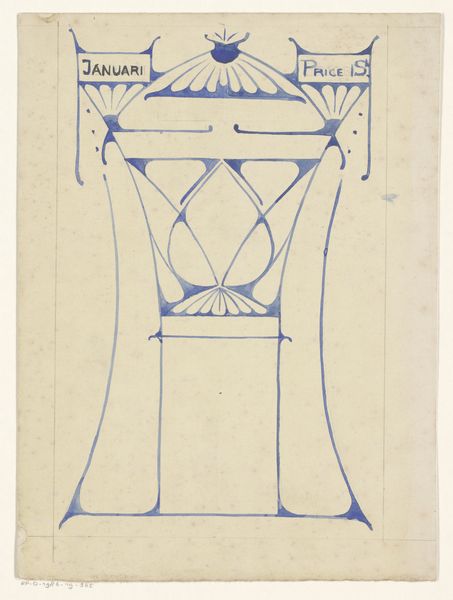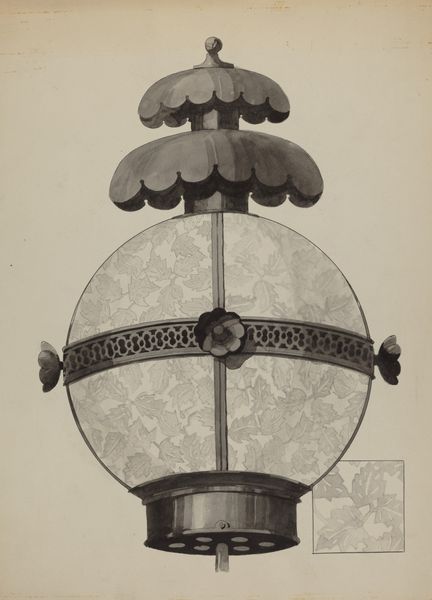
drawing, pencil, graphite
#
drawing
#
pen sketch
#
pencil sketch
#
geometric
#
pencil
#
graphite
#
realism
Dimensions: overall: 53.5 x 35.7 cm (21 1/16 x 14 1/16 in.)
Copyright: National Gallery of Art: CC0 1.0
Curator: What a curious find this is. It's a drawing titled "Corner Shelf Bracket," created around 1940, rendered in pencil and graphite. There's something so delicate and detailed about the sketch for such a functional, manufactured item. Editor: My first thought is how airy the whole composition feels despite depicting what should be a rather heavy, metallic object. The linework is so precise, giving it an almost lace-like quality. Curator: It’s interesting to consider the cultural context, though. Mass-produced ironwork became increasingly common, particularly in middle-class homes during this period. Depicting it with such care suggests it wasn’t simply about functionality, but an aspirational vision. Perhaps it’s revealing something about the domestic ideals of the time? Editor: I agree, and notice how the artist captured light and shadow through careful gradations in graphite. Look at how they subtly suggest the rounded edges and depth of the shelving using line weights. It gives dimension to an otherwise flat rendering. The realism grounds the overall aesthetic in a sense of functionality. Curator: The proliferation of industrial design meant art and manufactured objects weren’t always separated. This drawing, in that light, is a document of material culture but also perhaps a celebration of accessible design for average citizens. The drawing feels like an intentional inclusion, given that household infrastructure typically goes uncelebrated, culturally speaking. Editor: Precisely. Thinking of the symmetry and repetition, there's an almost classical architectural echo here, too. The scrolls and flourishes remind me of baroque ornamentation; however, in a refined way. There's certainly a beauty in functional design. Curator: I think it’s valuable because of what it communicates beyond being a simple blueprint or design record. Editor: Ultimately, its graphic qualities make me reconsider the value we place on functional objects and how they mirror historical trends. A humble shelf bracket reveals such potential.
Comments
No comments
Be the first to comment and join the conversation on the ultimate creative platform.
